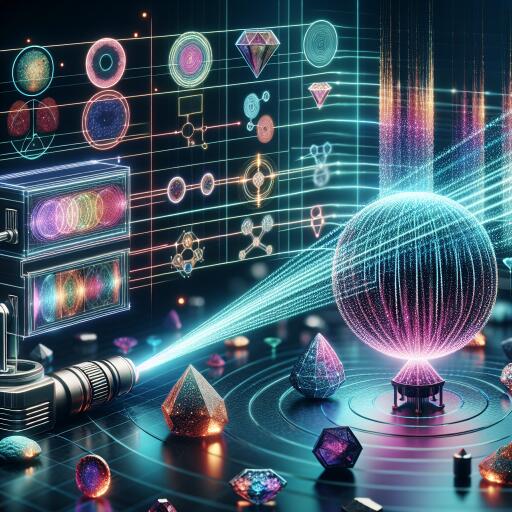Revolutionizing Jewelry Rock Discrimination with Advanced Spectroscopy and Deep Learning
In the quest to identify precious stones, ancient societies like the people of Shahr-e Sokhteh devoted significant effort to adorning themselves with exquisite jewelry made from a variety of materials such as wood, bone, and metals, alongside more valuable gems. The artisans of Shahr-e Sokhteh were renowned for their skill in crafting beads and other objects from semi-precious stones, sourced from regions like the Sistan heights and the Chagai area. Their legacy, unearthed in the vast archaeological sites, presents a mystique that resonates through the ages.
Key in the analysis of these ancient gemstones is the Laser-Induced Breakdown Spectroscopy (LIBS), a sophisticated technique that illuminates the elemental composition of jewelry rocks through laser pulses. This study delves into a deep learning approach combining Convolutional Neural Networks (CNN) and Long Short-Term Memory (LSTM) networks, aimed at enhancing the accuracy and interpretability of gemstone discrimination through spectral data analysis.
Laser-Induced Breakdown Spectroscopy: A Gateway to the Past
The experiment involved targeting a variety of gemstones including agates, turquoises, calcites, and azures with a Q-switched Nd:YAG laser. This process generates a plasma emission, captured and analyzed to discern the elemental composition of the stones. The LIBS setup, crucial for this spectral acquisition, was optimized to achieve the highest signal-to-noise ratio, a pivotal factor in ensuring accurate analytical outcomes.
Enhancing Data Interpretability with CNN-LSTM Architecture
The challenge with traditional spectral analysis lies in handling the complex, non-linear relationships inherent in the spectral data. To overcome this, the study employed a novel approach by leveraging a CNN-LSTM deep learning architecture. CNNs, known for their prowess in image and pattern recognition, complemented the LSTM networks which excel in processing temporal and sequence data, capturing the nuanced dynamics within the spectral data effectively.
The CNN component of the architecture focuses on extracting crucial features within the spectra, filtering out noise and unrelated information, while the LSTM aspect captures the sequential pattern data, incorporating the temporal variations seen in the spectral emissions. This dual approach enables a more nuanced analysis, allowing for the discrimination of various gemstones with enhanced accuracy.
Data Interpretation and Modeling
The study crafted a dataset that amalgamated spectral data from different gemstones, resulting in over 43,000 combined spectra. This plentiful dataset was processed through normalization techniques to address the fluctuating characteristics inherent within the LIBS spectra. The deep learning model was then trained with this curated dataset, aiming to classify the type of gemstone based on its spectral signature.
A notable innovation in the analytical process was the use of the CNN-LSTM network for interpreting the LIBS spectra. By employing a one-dimensional CNN network to extract spatial features of the trajectory data, followed by the LSTM network’s adeptness at handling sequential data, the analysis could unravel the complex optical emissions patterns, a task unachievable with traditional methods.
Advancing Gemstone Discrimination with Deep Learning
The resulting classification model demonstrated promising results, with the CNN-LSTM architecture successfully interpreting the LIBS spectra for gemstone discrimination. This approach not only elevates the accuracy of identifying various gemstones but also offers a new pathway for interpreting spectral data in archeological and geological research.
Furthermore, the utilisation of LASSO regression analysis within this framework aids in selecting the most relevant features for modeling, streamlining the algorithm’s efficiency and enhancing its predictability.
Conclusion
This pioneering study showcases the powerful synergy between laser-induced breakdown spectroscopy and advanced deep learning algorithms, opening new vistas in the accurate discrimination of jewelry rocks. Such advancements not only enrich our understanding of ancient societies and their use of gemstones but also pave the way for innovative applications in material science and archeometry. As technology evolves, the frontiers of knowledge expand, offering a deeper glimpse into the past and a more nuanced understanding of the world around us.










